Too many company cultures are accidental. Many—for better or worse—take on the personality of the CEO or founder. Worse yet, some work cultures are aspirational versus practical—they post words on their “about us” page and on the walls of their conference rooms that sound good. But in the end, people find it difficult to live up to those vague values statements.
The best work cultures are intentional rather than accidental. They are defined, monitored, measured, and—yes, calibrated.
Just like a meticulous technician calibrates a vital piece of machinery so it performs to expected standards, today’s business leaders must gather objective data—through customized assessments—to determine how far their actual work culture deviates from their ideal.
Let's learn more about culture calibration...
How well does your current company culture help attract and retain the young talent your organization needs today?
Chances are good your answer to that question is “not good enough.” Because the transactional industrial-age norms still anchored to today’s workplaces simply do not inspire younger workers.
Deloitte's Global 2024 Gen Z and Millennial Survey found that Gen Zs and Millennials want purpose-driven work. In addition, they are not afraid to turn down work that doesn't align with their values. The survey found:
Between 43-50% have rejected an assignment or project based on their personal beliefs
40-44% have turned down an employer based on personal ethics or beliefs
A staggering 86-89% say having a sense of purpose is vital to their overall job satisfaction and well-being
Through culture calibration, today’s business leaders ensure their work culture aligns with the company cultures highly coveted by younger generations.
How can you ensure your work culture aligns with younger generations' requirements? Through culture calibration.
The word "calibration" comes with many uses and applications. For our purposes, we'll use this definition:
"To standardize (something, such as a measuring instrument) by determining the deviation from a standard to ascertain the proper correction factors."
With this terminology in mind, work culture calibration requires senior leaders to:
01.
Standardize
Standardize their ideal work culture by defining the organization's servant purpose, values, and behaviors and communicating those standards to all staff.
02.
Determine
Determine the deviation from that standard by measuring how well leaders and team members demonstrate your formalized valued behaviors in daily interactions.
03.
Implement
Implement the proper correction factors to align all plans, decisions, and actions with your ideal culture. Leaders must re-direct misaligned behaviors while celebrating aligned behaviors.
Most leaders have not been asked to proactively measure their ideal culture or promptly quash disrespectful, unproductive behaviors.
So, senior leaders need direction on determining the deviation from their ideal culture.
Our proven culture refinement process uses customized (and completely confidential) values and behaviors assessments. These surveys let team members rate how well their leaders model your organization's standardized, formalized behaviors.
Survey results clearly show where the company's valued behaviors are embraced and should be celebrated-and where people and processes deviate from the defined culture standards and require correction.
If your organization has trouble hiring and keeping top young talent or if your leaders aren't aligned with your values standards, culture calibration can substantially improve your work culture.
Our values assessments help you:
Create a customized values survey based on your standardized, desired culture.
Determine the deviation from that standardized culture by administering your customized values survey.
Debrief your survey results with each formal leader.
Apply the appropriate correction factors, coaching individual leaders to demonstrate your valued behaviors in every interaction.
Details About The
Values and Behaviors Survey
The structure of your survey is vitally important. Survey items (or questions) are best derived from your defined values and behaviors. (If your company hasn't done those yet, Chris and his team can help you define your organizational constitution, which is the standardization of your desired culture).
Survey questions gather feedback on one leader and one valued behavior. The survey structure invites the leader's direct reports to rate that leader on each valued behavior. (The survey can also invite ratings of leaders and behaviors from indirect reports.)
Ratings are confidential; they are not attributed to any individual respondent.
Here's an example of a survey item from one client: "Roberta Garcia does what she says she will do." This question rates this leader on one of the company's valued behaviors - "I do what I say I will do" from their integrity value.
Note that each question is stated positively, describing specifically how you want leaders to behave in your workplace. Team members score each question on a six-point scale. The only desirable responses are at the 5-6 level - "agree" and "strongly agree" - to the positive questions on your survey. Essentially, a 5-6 score is a degree of "yes, this leader models this behavior," while a 1-4 score is a degree of "no, this leader does not model this behavior." This proven approach ensures that the resulting profile presents simple and actionable feedback. This survey is conducted formally twice each year.
Values & Behaviors Scorecard Examples
Here is an example of one client's scorecard summary for the company president. Their six values (across the bottom of this graph) incorporate fifteen specific valued behaviors. These behaviors standardize their desired work culture.
The ratings of the president's direct and indirect reports show he's above the 5-6 level on four of the six values and "just shy" of meeting the desired level in the other two values.
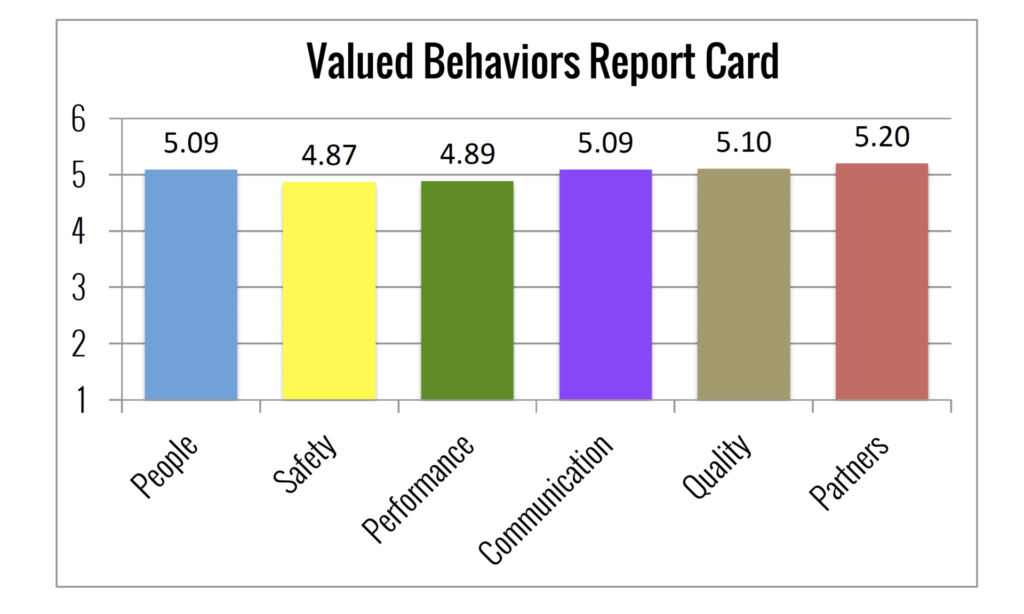
By comparison, here is a summary scoring graph from a different formal leader in this client organization. This person is a front-line supervisor rated by his direct reports.
The summary graph's visual nature shows that this leader's direct reports do not feel he effectively models the organization's standardized valued behaviors in daily interactions. Average scores in the 2-4 range for all six values mean this supervisor needs corrective coaching to fully embrace respect and results on the job.
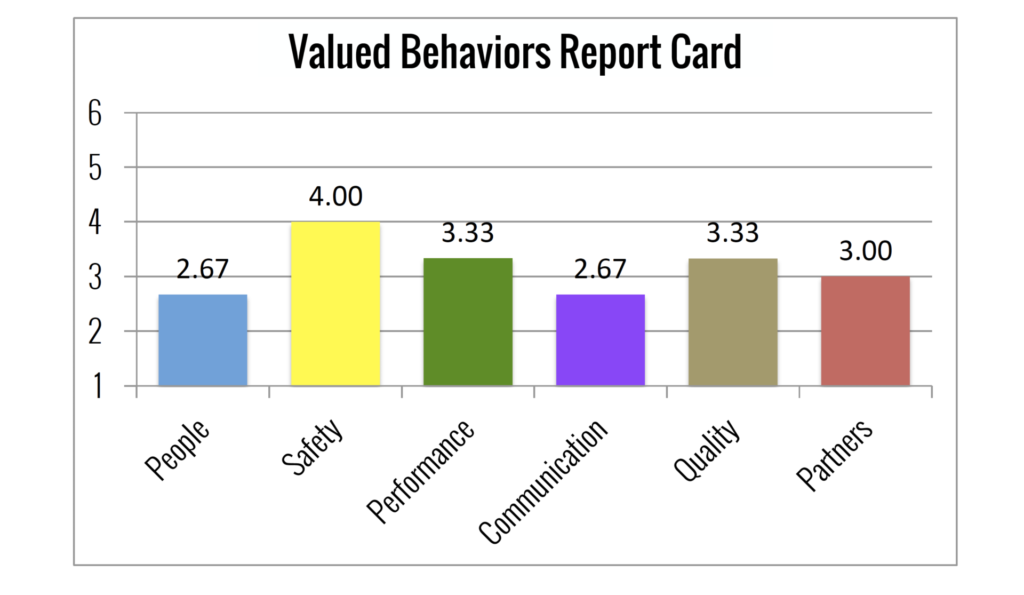
Again, these samples are from a survey customized to this client's standarized culture. These surveys are not "off the shelf," ready to be administered across your organization. Your values and behaviors survey must be crafted specifically for your standards (your desired culture and values).
Details About The
Executive Team Effectiveness Survey
The Executive Team Effectiveness Survey is an annual assessment of your executive team's demonstrated competence to lead your desired work culture.
This 10-question survey-which includes best practices from effective executive teams that sustain purposeful, positive, productive work cultures-is customized for your company and administered once annually. It standardizes how your executive team should operate to lead your company effectively.
Items cover topics such as effective team communication, validation of contributions and values, accountability, strategic direction, and members' ability to serve as positive role models. These ten items are rated on our six-point scale. Responses are gathered from every employee, from front-line staff to senior executives.
Executive Team Effectiveness Scorecard Example
Here is an example of one client's recent first survey of their executive team's effectiveness using this assessment.
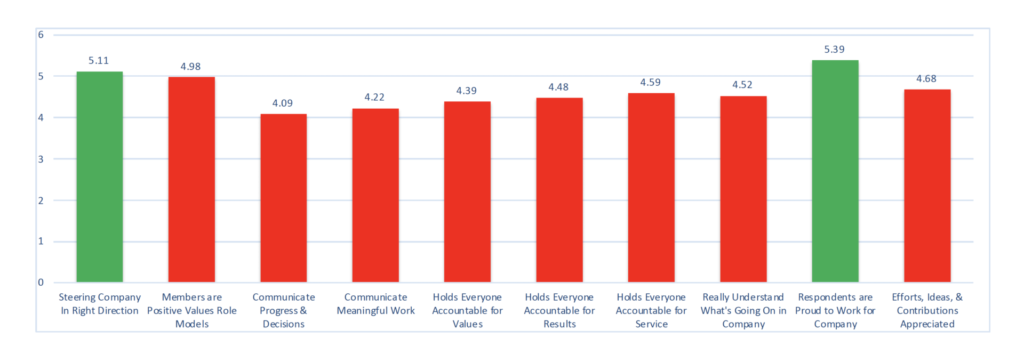
Employee ratings on these questions determine the deviation from your executive team's operational standards. This executive team exceeds the standard (ratings at the 5-6 level) in two of the ten questions - and is seen as less than effective in eight of ten questions.
While these scores are not overly positive - the smallest deviation from the standard is ten green bars indicating 5-6 ratings across all respondents - this range of scores is quite typical for the first run of this assessment at a company. These executives admit they previously saw their job as "managing results." As they continue to work towards sustaining a purposeful, positive, productive work culture, they know they must do more to validate, communicate, connect, reflect, and more - every day.
Work with Chris, and you'll be In good company
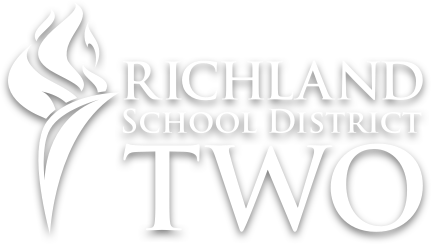
Richland

Consolidated

Medicine Man

Five Below

World Kitchen

Vstarr

Eleven
Eco

Time

Pesco

Mercado

Waste Management

Horizon

Veon

Embrace

Thulium

DHSC

NACM

